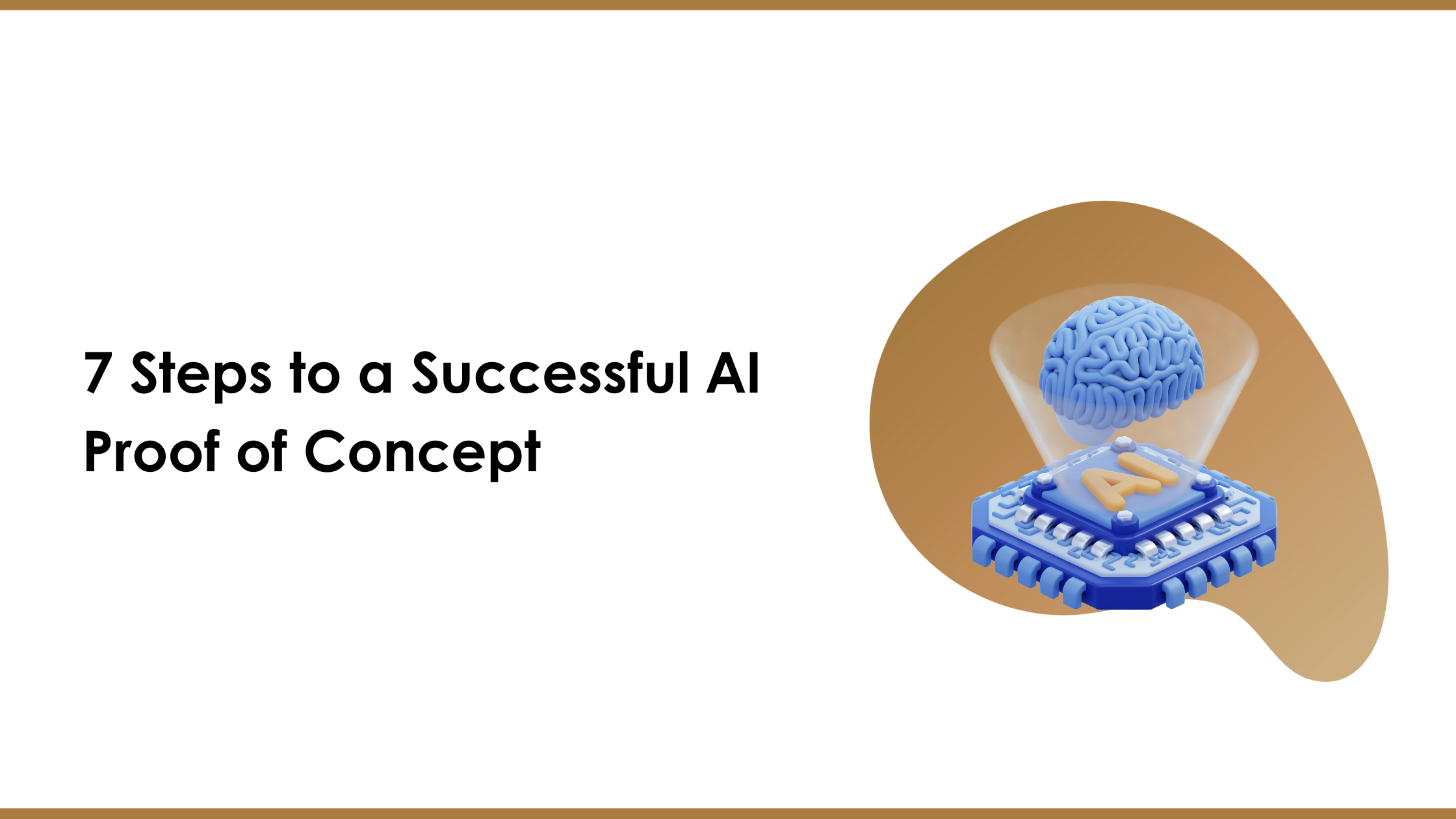7 Steps to a Successful AI Proof of Concept

Launching an AI initiative can feel overwhelming due to uncertainties about data quality, model feasibility, or business alignment. Starting with an ai proof of concept offers a structured route to confirm these assumptions, identify potential issues, and demonstrate value swiftly. This blog outlines seven key steps for ensuring your pilot not only meets technical goals but also drives real-world impact.
1. Identify a High-Value Use Case
Step 1 involves selecting a single problem domain with the potential for significant ROI or user satisfaction gains. For instance:
-
Customer Queries: Automated chatbots answering basic inquiries.
-
Predictive Maintenance: Flagging machinery breakdowns ahead of time.
-
Fraud Detection: Real-time anomaly detection in financial transactions.
A clear, narrowly defined use case simplifies data requirements and shortens the path to meaningful results.
2. Collect and Cleanse Data
Data forms the backbone of AI success, and a pilot project is no exception. Ensure your data is:
-
Relevant: Aligned with the chosen use case.
-
Clean: No duplicates or major inconsistencies that skew modeling.
-
Sufficiently Labeled: If supervised learning is used, well-labeled training examples remain crucial.
Where data is incomplete, consider initial manual labeling or exploring external data sets. This step often consumes a large portion of the timeline, so plan accordingly.
3. Assemble a Cross-Functional Team
Combining technical and domain expertise is vital:
-
Data Scientists: Handle modeling and analytics.
-
Engineers/DevOps: Manage code repositories and pilot deployments.
-
Business Stakeholders: Define success metrics and ensure alignment with strategic goals.
Strong collaboration ensures that each aspect of the pilot remains relevant to operational realities and user needs.
4. Develop a Simple, Iterative Model
Rather than a fully featured or overly complex algorithm, start small. For example:
-
Baseline Models: A logistic regression or random forest can yield quick, interpretable results.
-
Refining Approaches: If initial metrics underperform, expand complexity—maybe deep neural networks or ensemble methods.
This iterative cycle—train, evaluate, refine—drives efficient improvement.
5. Test and Validate
Conduct a thorough evaluation:
-
Split Datasets: Keep separate test or validation sets for honest performance checks.
-
KPIs: Evaluate metrics like accuracy, F1 score, or response time.
-
Pilot End-Users: If your pilot includes a chatbot or user interface, gather feedback from a small internal or external group.
Tracking real performance data fosters confidence in eventual ROI.
6. Deploy the Pilot in a Controlled Environment
A pilot stands or falls based on real-world usage. Deploy in a limited setting—one department, region, or customer subset—so you can:
-
Monitor Resource Usage: Evaluate CPU/GPU load, memory constraints, or network overhead.
-
Identify Integration Hurdles: Confirm how the solution ties into existing CRMs, data warehouses, or third-party tools.
-
Refine Based on Feedback: Possibly alter model configurations or user flows if initial results differ from lab tests.
7. Measure Success and Plan Scaling
Finally, present the outcomes to key decision-makers, comparing results to your original KPIs:
-
Cost Savings: Hours saved or manual tasks replaced.
-
User Satisfaction: Surveys or churn reduction.
-
Model Performance: Gains in accuracy or speed.
If the data shows you’ve met or exceeded thresholds, champion the next phase: scaling or extending use cases across broader operations.
Conclusion
A well-executed ai proof of concept moves AI aspirations from theory to tangible outcomes. By focusing on carefully chosen use cases, robust data handling, cross-functional teamwork, and iterative improvements, organizations accelerate learning and lower risk. Ultimately, success isn’t just in proving AI technology works, but in mapping pilot results to strategic goals—ensuring a smoother journey toward enterprise-wide AI adoption.
- Industry
- Art
- Causes
- Crafts
- Dance
- Drinks
- Film
- Fitness
- Food
- Spiele
- Gardening
- Health
- Home
- Literature
- Music
- Networking
- Other
- Party
- Religion
- Shopping
- Sports
- Theater
- Wellness
- News


